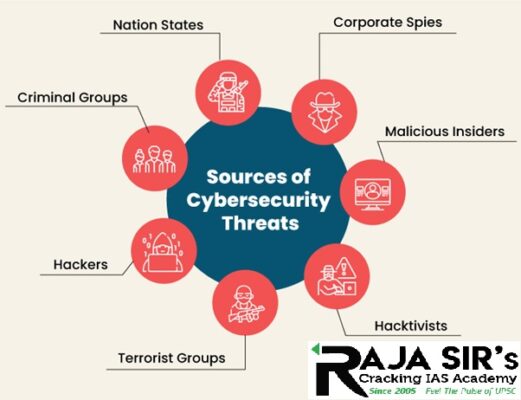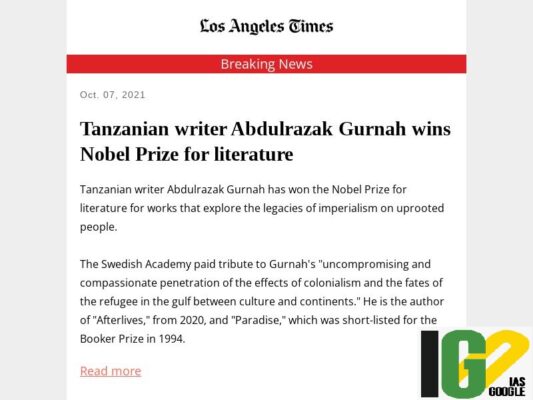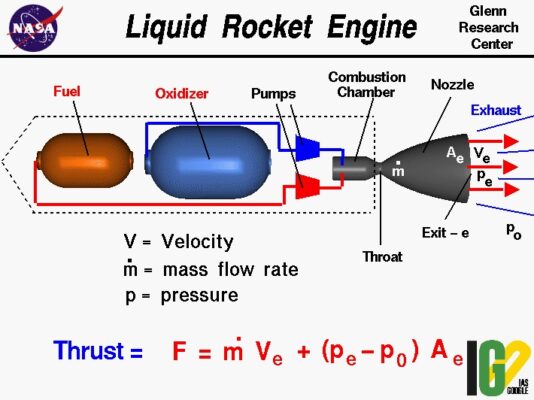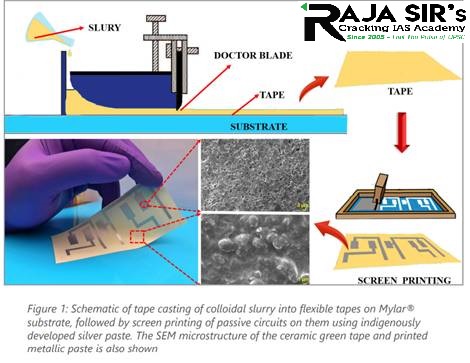- Home
- Prelims
- Mains
- Current Affairs
- Study Materials
- Test Series
12th Oct 2021
RBI MONETARY POLICY HIGHLIGHTS: MPC HOLDS REPO RATE, SAYS PRIORITY IS TO NURTURE GROWTH; RETAINS GDP TARGET
The Monetary Policy Committee (MPC) of the Reserve Bank of India (RBI) kept the key interest rates unchanged and reduced the inflation target for the year 2021-22.
Highlights:










- Interest rates in the banking system are expected to remain steady as the Repo Rate remains unchanged at 4 per cent, Reverse Repo rate at 3.35 per cent and the Marginal Standing Facility (MSF) rate and the Bank Rate at 4.25 per cent.
- Continuation with the accommodative stance to revive and sustain growth on a durable basis and continue to mitigate the impact of Covid-19 on the economy.
- The RBI has slashed the inflation forecast for 2021-22 to 5.3 per cent from 5.7 per cent estimated earlier.
- The inflation trajectory is set to edge down during Q3 of 2021-22, and several evolving factors provide comfort on the food price front.
- The RBI has retained the projection for real GDP growth at 9.5 per cent in 2021- 22 consisting of 7.9 per cent in Q2 of the current year.
- Almost all components of GDP registered year-on-year growth, despite a sharp loss of momentum due to the second wave.

- Regions of highest TWS losses: Antarctica and Greenland.
- Terrestrial water storage (TWS) dropped at a rate of 1 cm per year in 20 years (2002-2021) globally.
- TWS loss in India:
- TWS has been lost at a rate of 3-4 cm per year.
- Maximum loss in northern part of the country.
- Per capita water availability is reducing due to an increase in population.
- According to the Union Ministry of Housing and Urban Affairs:
- Average annual per capita water availability has reduced to 1,545 cubic metres in 2011, from 1,816 cubic metres in 2001.
- According to Falkenmark Water Stress Indicator:
- Five of the twenty-one river basins in India are ‘absolute water scarce’ (per capita water availability below 500 cubic metres).
- Five are ‘water scarce’ (per capita water availability below 1,000 cubic metres).
- Three are ‘water stressed’ (per capita water availability below 1,700 cubic metres).
- According to the State of India’s Environment, 2020:
-
- Six river basins in India will become absolute water scarce.
- Six will become water scarce.
- Four will become water stressed.
- This includes all phases of water over land (e.g., surface and groundwater, soil moisture, snow etc.).
- It acts as an important fresh water resource and a critical component of terrestrial water cycle.
- WMO is a specialized agency of the United Nations responsible for promoting international cooperation on atmospheric science, climatology, hydrology and geophysics.
- History: WMO originated from the International Meteorological Organization, a nongovernmental organization founded as a forum for exchanging weather data and research at the 1873 Vienna International Meteorological Congress.
- Headquarters: Geneva
- Its supreme body is the World Meteorological Congress.
- Membership: 193 Member States.
- An integrated Earth System observation network to provide weather, climate and water-related data.
- Data management centres and telecommunication systems for the provision and rapid exchange of weather, climate and water-related data.
- Creation of standards for observation and monitoring in order to ensure uniformity in the practices and procedures & ascertain the homogeneity of data and statistics worldwide.
- Provision of weather, climate and water-related services to reduce disaster risks and contribute to climate change adaptation & for sectors such as transport (aviation, maritime and land-based), water resource management, agriculture, health, energy and other areas.
- Activities in operational hydrology & cooperation between National Meteorological and Hydrological Services.
- Local conservation group SwaraOwa is tracking a population of about 400 gibbons living in a 73-kilometre reserve in Petungkriyono Forest in central Java, Indonesia.

- Also known as the silvery gibbon.
- Habitat: The primate is unique to central and western Java.
- Role in the ecosystem: regenerating forest vegetation by dispersing seeds.
- IUCN Status: Endangered
- Features:
- Its coat is bluish-grey in colour, with a dark grey or black cap.
- Lacks an external tail.
- Diurnal and arboreal.
- Gestation Period: 7 months.
- Silvery gibbon lives in pairs.
- Two sub-species:
- Western silvery gibbon or western Javan gibbon.
- Eastern silvery gibbon or central Javan gibbon.
- Also known as the IUCN Red List or Red Data Book.
- Founded in 1964.
- It is the world's most comprehensive and authoritative inventory of the global conservation status of biological species.
- It uses a set of criteria to evaluate the extinction risk of thousands of species and subspecies.
- Goals of the Red List:
- To provide scientifically based information on the status of species and subspecies at a global level.
- To draw attention to the magnitude and importance of threatened biodiversity.
- To influence national and international policy and decision-making.
- To provide information to guide actions to conserve biological diversity.
- Species are classified by the IUCN Red List into nine groups, specified through the following criteria:
- Rate of decline.
- Population size.
- Area of geographic distribution.
- Degree of population.
- Distribution fragmentation.
- Categories:
- Extinct (EX): beyond reasonable doubt that the species is no longer existing.
- Extinct in the wild (EW): survives only in captivity, cultivation and/or outside native range, as presumed after exhaustive surveys.
- Critically endangered (CR): survives in a particularly and extremely critical state.
- Endangered (EN): very high risk of extinction in the wild, meets any of criteria A to E for Endangered.
- Vulnerable (VU): meets one of the 5 red list criteria and thus considered to be at high risk of unnatural (human-caused) extinction without further human intervention.
- Near Threatened (NT): close to being at high risk of extinction in the near future.
- Least Concern (LC): unlikely to become extinct in the near future.
- Data Deficient (DD): insufficient information for classification.
- Not Evaluated (NE): not yet assessed.
- Java is one of the Greater Sunda Islands in Indonesia.
- It is bordered by the Indian Ocean to the south and the Java Sea to the north.
- It is formed by volcanic eruptions due to geologic subduction of the Australian Plate under the Sunda Plate.
- The natural environment of Java is tropical rainforest.
- Jakarta, the capital of Java, is among the world’s fastest sinking city.
- Java was the centre of powerful Hindu-Buddhist empires, the Islamic sultanates, and the core of the colonial Dutch East Indies.
- Main exports: Tea, coffee, tobacco, rubber, and cinchona (the source of quinine which is used to treat Malaria, and grown in the highlands of western Java).

- The guidelines are a precursor to cybersecurity regulations that the Central Electricity Authority is working on.
- It will apply to power generation utilities, distribution utilities, transmission companies and load dispatch centres, system integrators, equipment makers, vendors, service providers, IT hardware and software OEMs engaged in power supply system.
- The key requirements include appointment of a Chief Information Security Officer (CISO) at each “responsible entity” as well as the setting up of an Information Security Division headed by the CISO.
- The entities will also be required to incorporate a procedure for identifying and reporting of any disturbances suspected or confirmed to be caused by sabotage.
- They have to submit the report to the sectoral Computer Emergency Response Team (CERT) and the Indian CERT within 24 hours.
- Four of India’s five regional load dispatch centres of India have faced cyberattacks in past some months.
- Red Echo, a hacker group affiliated with the Chinese government is speculated to targeting India’s power grid.

- CISO is a senior-level executive responsible for developing and implementing an information security program.
- The program includes procedures and policies designed to protect enterprise communications, systems and assets from both internal and external threats.
- CISO is tasked with anticipating, assessing and actively managing new and emerging threats.
- Cyber security refers to the body of technologies, processes, and practices designed to protect networks, devices, programs, and data from attack, damage, or unauthorized access.
- Need for Cyber security :
- Government, military, corporate, financial, and medical organizations collect, process, and store unprecedented amounts of data on computers and other devices.
- A significant portion of data can be sensitive information, whether that be intellectual property, financial data, personal information, or other types of data for which unauthorized access or exposure could have negative consequences.
- A cybersecurity threat is a malicious and deliberate attack by an individual or organization to gain unauthorized access to another individual’s or organization’s network to damage, disrupt, or steal IT assets, computer networks, intellectual property, or any other form of sensitive data.
- Malware attacks: Malware is defined as malicious software, including spyware, ransomware, viruses, and worms, which gets installed into the system when the user clicks a dangerous link or email.
- Phishing: Cybercriminals send malicious emails that seem to come from legitimate resources.
- Spear phishing: A more sophisticated form of a phishing attack in which cybercriminals target only privileged users such as system administrators.
- Man in the Middle (MitM) attack: This occurs when cyber criminals place themselves between a two-party communication.
- Denial of Service attack: Aims at flooding systems, networks, or servers with massive traffic, thereby making the system unable to fulfil legitimate requests.
- Structured Query Language (SQL) injection attack: This occurs when cybercriminals attempt to access the database by uploading malicious SQL scripts.
- Zero-day Exploit attack: Occurs when software or hardware vulnerability is announced, and the cybercriminals exploit the vulnerability before a patch or solution is implemented.
- Advanced Persistent threat: Occurs when a malicious actor gains unauthorized access to a system or network and remains undetected for an extended time.
- Ransomware: A type of malware attack in which the attacker locks or encrypts the victim’s data and threatens to publish or blocks access to data unless a ransom is paid.
- Domain Name System (DNS) attack: Attackers leverage the DNS vulnerabilities to divert site visitors to malicious pages (DNS Hijacking) and exfiltrate data from compromised systems (DNS Tunnelling).

- The exercise included ships and aircraft of Japan Maritime Self Defence Force (JMSDF) and Indian Navy.
- Both countries performed operations focused on air, surface, and sub-surface dimensions of maritime operations, and air domain.
- The units exercised War with P8I aircraft of Indian Navy (IN) providing maritime reconnaissance support to both navies.
- They practiced Replenishment at Sea approaches. The exercise involved complex Targeting exercises and surface gun shoots on an expendable target.
- Advanced coordinated anti-submarine exercise involving an underwater target deployed by JMSDF.
- Advanced anti-aircraft firing exercises on Expendable Aerial Target launched from the deck of INS Kochi.
- Flying operations with MiG 29K fighters for multiple simulated air strike on surface units, from the IN’s Maritime Patrol Aircraft, Dornier.
- The MoU was signed between All India Institute of Ayurveda (AIIA) and Croatia’s Kvarner Health Tourism Cluster.
- Aim: To promote academic research, clinical and educational activities, medical education, training, and competency building.
- Focus will be on developing Ayurvedic medical guidelines for Ayurveda education in Croatia.
- The two countries will undertake academic activities in the field of Ayurveda in collaboration with the identified institutions.
- There will be close cooperation and collaboration on
- Research, including study design and execution.
- Developing evidence-based guidelines for Ayurvedic principles.
- Practices with modern medicine, conducting lectures, seminars, and conferences, on Ayurveda.
- It is situated in the northwestern part of the Balkan Peninsula, southeast Europe.
- It has low mountains and highlands near the Adriatic coastline, flat plains passing through the Hungarian border, and a multitude of islands.
- The coastal areas have a Mediterranean climate with hot summers and mild winters.
- Croats are by far the largest ethnic group in Croatia, several ethnic groups can be found in the republic.
- The 1991-95 civil war between Croats and Serbs caused massive damage to cities and industries.
- It affected the trade and drastically reduced industrial output.
- Croatia has progressed politically and economically. In July of 2013 it was accepted into the European Union.

- He was awarded for his contribution in “uncompromising and compassionate penetration of the effects of colonialism and the fate of the refugee in the gulf between cultures and continents.”
- It was taken from his famous novel the premise of ‘Paradise’ 1994.
- It explores the fate of an African Arab youth who is enlisted to fight for the Germans in World War I.
- He was born in Zanzibar on the Indian Ocean in December 1948, when it was ruled by the British.
- He left the island in 1968 and moved to Britain, as a refugee.
- He began writing at the age of 21, which gravitated towards English language.
- He earned his PhD from the University of Kent, Canterbury, where he was the professor of English.
- His academic work focused on post-colonial and diasporic literature.
- His writings include a multitude of languages like Swahili, Arabic, Hindi, and German.
- Memory of Departure (1987)
- Pilgrims Way (1988)
- Paradise (1994)
- By the Sea (2001)
- Desertion (2005)
- Gravel Heart (2017)
- Afterlives (2020)
- His books feature African Arab protagonists trying to come to terms with dislocation, looking in societies and cultures.
- His work draws attention to how racism and prejudice against communities and religions perpetuate cultures of oppression.
- In 1994, he won Booker Prize for his Fiction ‘Paradise’.
- In 2001, He was awarded with Los Angeles Times Book Prize for ‘Desertion’ and ‘By the Sea’.

- The semi cryo-liquid oxygen (LOX) tank - the first developmental welded hardware is a part of the SC120 stage, intended for payload enhancement by replacing the L110 stage in the existing Mk-III launch vehicle.
- In 2020, HAL delivered the biggest ever cryogenic Liquid Hydrogen tank (C32-LH2) which is 4 metres in diameter and 8 metres in length.
- Till date, HAL has delivered 244 propellant tanks and 95 water tanks to ISRO for the space programmes of Polar Satellite Launch Vehicles (PSLVs), Geo-stationary Satellite Launch Vehicle (GSLV) Mk-II and GSLV Mk-III of diameter 2.1, 2.8 and 4m where the length of the tank varies from 2.5 to 8m.
- Currently, the company has been supplying hardware for the full-fledged launch vehicle GSLV Mk-III for the prestigious Gaganyaan Programme.
- The present technology is dependent on liquid electrolytes and narrow range of operating temperatures.
- A solid-state energy storage device in the form of thermally stable solid electrolytes for Li+ ion batteries and supercapacitors has been developed and tested their stability and efficiency using state of the art facilities.
- The DST FIST-supported High-temperature X-ray diffraction (HTXRD) facility Rigaku SmartLab was used for the thermal stability assessment of novel solid electrolytes.
- The XRD patterns were obtained in situ up to 500 OC.
- The FIST program of the Department of Science & Technology (DST) supported XRD facility has provided infrastructural support to investigate composite materials.
- The results from HTXRD patterns for the range 30-500 OC for the ionic liquid (IL) dispersed sol-gel derived NASICON (superionic sodium conductors) structured LiTi2(PO4)3 (LTP) composites indicated that IL does not react with LTP at higher temperatures to form unwanted compound.
- HTXRD pattern is a technique used to study the structural changes in the material as a function of temperature.
- The composite was used in Lithium button cells. Excellent stability has been achieved under battery conditions.
- The composite promises battery application for a wide range of temperature.
- Further, the samples are being used as electrolytes for electric double-layer (EDLC) supercapacitors.
- A high capacity of around 200 F/g and thermal stability at least up to 100 OC has been achieved for 10000 cycles.
- Ionic liquid composites with NASICONs, Garnets, and some other fast ionic solids have been found to be promising for high-temperature energy storage devices.
- These devices are strategically important for military and space applications.
- These technologies, known as Low-Temperature Cofired Ceramic (LTCC) and High-Temperature Cofired Ceramic HTCC substrates with applications as satellite communication components, are currently being imported in India.

- Hybrid microsystems based on LTCC technology is the integration of passive components, such as a capacitor, resistor, inductor, resonator and filter, etc., into a multi-layered ceramic module.
- The indigenous development technology has dielectric properties or the ability of storing electric energy in an electric field that are comparable to the commercial tapes, whereas thermal conductivity is better than them.
- A patent has already been filed on tape casting of HTCC substrate based on zircon.
- It can plug the money drain through import substitution and support the country’s strategic sectors.
- Currently, the LTCC products are being imported from vendors like DuPont, Ferro etc.
- It is suitable for low orbit satellite systems supporting reduced satellite volume and mass, besides reduced production time and affordable cost.
- An aqueous tape casting technique has been developed, is relatively health hazard free since it does not employ volatile organic components like xylene and methyl ethyl ketone.
- The technology developed is a glass-free LTCC tape casting composition, which can address the brutality issues of tapes.
- After successful testing, NIIST tapes can be employed in ISRO’s several microwave components like S- and C- band receivers for their satellite transponders.









 Latest News
Latest News
 General Studies
General Studies